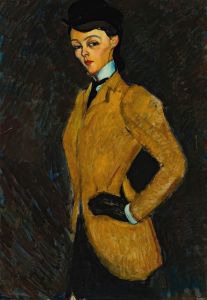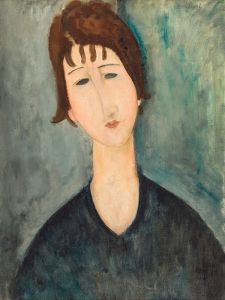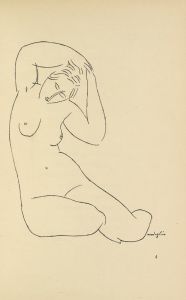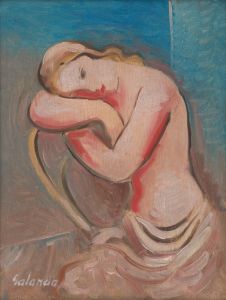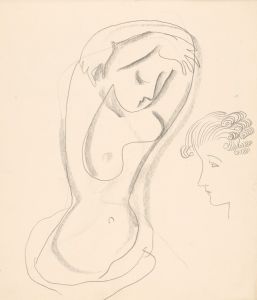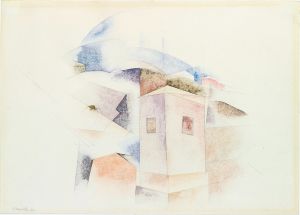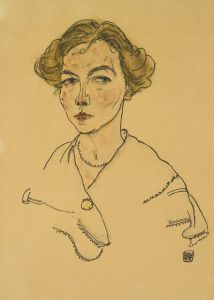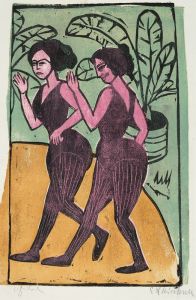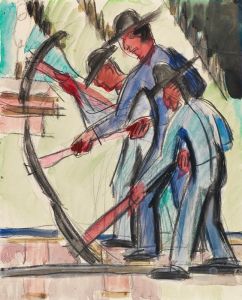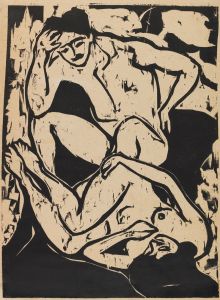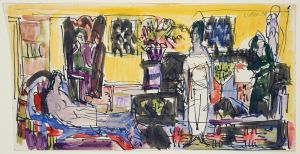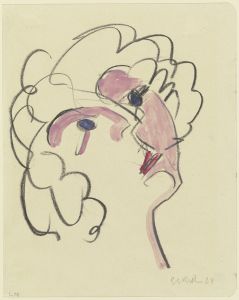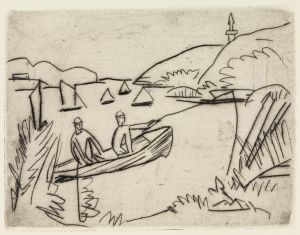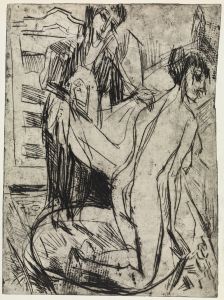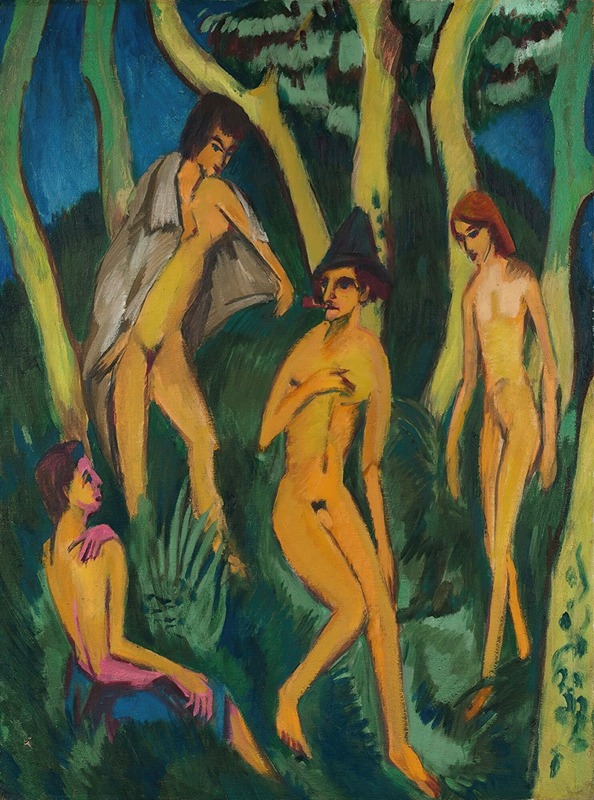
Vier akte unter bäumen
A hand-painted replica of Ernst Ludwig Kirchner’s masterpiece Vier akte unter bäumen, meticulously crafted by professional artists to capture the true essence of the original. Each piece is created with museum-quality canvas and rare mineral pigments, carefully painted by experienced artists with delicate brushstrokes and rich, layered colors to perfectly recreate the texture of the original artwork. Unlike machine-printed reproductions, this hand-painted version brings the painting to life, infused with the artist’s emotions and skill in every stroke. Whether for personal collection or home decoration, it instantly elevates the artistic atmosphere of any space.
Ernst Ludwig Kirchner was a prominent German expressionist painter and one of the founding members of the artist group Die Brücke (The Bridge), which played a pivotal role in the development of modern art in the early 20th century. Kirchner's work is characterized by its bold colors, dynamic compositions, and emotive intensity, often reflecting the anxieties and tensions of the modern age.
"Vier Akte unter Bäumen" (Four Nudes under Trees) is one of Kirchner's notable works, created during a period when he was deeply engaged with the themes of nature and the human form. This painting exemplifies Kirchner's exploration of the relationship between humans and their natural surroundings, a recurring motif in his oeuvre. The artwork features four nude figures situated in a forested landscape, a setting that allows Kirchner to blend the human form with the organic shapes of nature.
Kirchner's style in "Vier Akte unter Bäumen" is marked by his use of vibrant, non-naturalistic colors and expressive brushwork. These elements are typical of the expressionist movement, which sought to convey emotional experience rather than physical reality. The figures in the painting are rendered with elongated forms and exaggerated poses, emphasizing movement and vitality. This approach reflects Kirchner's interest in primitive art and his desire to break away from traditional European artistic conventions.
The setting of the painting, with its dense foliage and dappled light, creates a sense of intimacy and seclusion, inviting viewers to contemplate the harmonious coexistence of humans and nature. Kirchner often depicted nudes in natural settings, drawing inspiration from the idea of returning to a more primal and unspoiled state of being. This theme was central to the philosophy of Die Brücke, which advocated for a return to authenticity and a rejection of the industrialized world's alienation.
"Vier Akte unter Bäumen" was created during a time when Kirchner and other members of Die Brücke were spending summers in rural retreats, where they could immerse themselves in nature and work free from the constraints of urban life. These experiences were crucial to the development of their artistic vision, as they sought to capture the essence of the natural world and its impact on the human psyche.
Kirchner's work, including "Vier Akte unter Bäumen," was influenced by various sources, including African and Oceanic art, which he encountered through ethnographic collections in Germany. These influences are evident in his stylized depiction of the human figure and his use of bold, simplified forms.
Throughout his career, Kirchner faced numerous challenges, including the trauma of World War I and the subsequent rise of the Nazi regime, which condemned his work as "degenerate art." Despite these obstacles, Kirchner's legacy endures, and his contributions to the expressionist movement continue to be celebrated for their innovation and emotional depth.
"Vier Akte unter Bäumen" remains an important example of Kirchner's artistic achievements, reflecting his commitment to exploring the complexities of human existence and the natural world. The painting is a testament to his ability to convey profound emotional truths through his distinctive expressionist style.





